by Jon LeSage, editor and publisher, Green Auto Market
Here’s my take on the 10 most significant and interesting occurrences during the past week…….
 ZEV credits tightening: California’s zero emission vehicle mandate, adopted by nine other states, is heading for change in 2018 as the credit structure enters its next phase. Automakers have been able to earn partial credits from sales of plug-in hybrids and hybrid electric vehicles, along with low-emissions and fuel efficient conventional vehicles. Regulations will be tightening in 2018 in a way that limits the impact of those partial credits and requires more sales of pure ZEVs, or battery electric vehicles and hydrogen fuel cell vehicles. California and nine other states – Connecticut, Maine, Maryland, Massachusetts, New Jersey, New York, Oregon, Rhode Island, and Vermont – accounted for 28% of new-vehicle registrations in the U.S. last year, according to IHS Automotive data. Automakers are feeling the pressure to comply soon while rolling out more competitive, affordable, 200-mile-plus electric vehicles.
ZEV credits tightening: California’s zero emission vehicle mandate, adopted by nine other states, is heading for change in 2018 as the credit structure enters its next phase. Automakers have been able to earn partial credits from sales of plug-in hybrids and hybrid electric vehicles, along with low-emissions and fuel efficient conventional vehicles. Regulations will be tightening in 2018 in a way that limits the impact of those partial credits and requires more sales of pure ZEVs, or battery electric vehicles and hydrogen fuel cell vehicles. California and nine other states – Connecticut, Maine, Maryland, Massachusetts, New Jersey, New York, Oregon, Rhode Island, and Vermont – accounted for 28% of new-vehicle registrations in the U.S. last year, according to IHS Automotive data. Automakers are feeling the pressure to comply soon while rolling out more competitive, affordable, 200-mile-plus electric vehicles.- Tesla and SolarCity: Tesla shareholders had mixed reactions to Tesla’s plan, announced last week, to take over SolarCity for $2.8 billion. Tesla said that by acquiring SolarCity, the two companies would create a unique package of clean energy offerings, including solar panels, home battery storage, and electric cars under a single trusted brand. Investors, however, have been cool to the deal, sending the value of Tesla down more than what it proposed to pay for SolarCity. Critics have argued the two companies cater to different groups of customers, with little crossover. Elon Musk, a founder of Tesla and SolarCity who owns about a fifth of each, has to rely on outside investors to decide where this deal will go, and the process is being led by major fund companies such as Fidelity Investments. Some investors are concerned that this new investment will take away the focus needed to run the gigafactory and roll out the Model 3 the way it should be rolled out; others perceive trouble in taking on more than $3 billion in debt carried by SolarCity, a company run by Musk’s cousins. Tesla shares closed at $198.55 yesterday after reaching a recent peak of $235.52 on June 8.
- Faraday testing self-driving cars: Faraday Future will begin testing prototype self-driving electric vehicles on California roads later this year after winning approval from the state, an industry source said. A spokesperson from California DMV confirmed that Faraday had been approved to test self-driving vehicles on public roads on June 17. While the company plans to begin selling high-performance electric vehicles next year in the U.S., no details have been revealed yet on its self-driving car.
- Karma starts assembly: Karma Automotive opened up its 555,670-square-foot factory in Moreno Valley, Calif., with its first Karma Revero rolling of the assembly line last month. “A flame-red 1993 Chevrolet Camaro was the last car to roll off an assembly line in Southern California 24 years ago,” the automaker said. “We changed that this May when the first Karma Revero rolled off our Moreno Valley assembly line. The first of many.”
- Nissan said it will introduce two new technologies this year to move the automaker along in becoming a leader in electric vehicles and self-driving cars. The first is a new range extender that Nissan says will tackle two of the biggest hurdles confronting electric vehicles: cost and limited range.The new hybrid system, dubbed e-Power, debuted as a concept, the Gripz compact crossover shown last fall at the Frankfurt auto show.
- EV market forecast: Navigant Research expects the North American electric vehicle market will grow by around 62% year-over-year in 2016, nearing 200,000 sales. Growth is anticipated to come from expanding sales of the Tesla Model X, the second-generation Volt, and the introduction of the Chevrolet Bolt 200-mile range BEV, Prius Prime plug-in hybrid electric vehicle (PHEV), and Mitsubishi Outlander PHEV later in the year. Navigant Research projects that the introduction of the Tesla Model 3 in late 2017 will likely boost the North American PEV market by around 60% in 2017 and then nearly double the market in 2018 after the first full year of Model 3 sales.
- Ford’s sustainability report: As part of its 2015/2016 Sustainability Report, Ford is introducing Project Better World, a mobility health services pilot program aimed at improving lives in developing countries while supporting new technological advancements and data analytics experiments. Through this program, Ford is working with World Vision South Africa and Riders for Health in Nigeria to donate two Ford Rangers, equipped to work as mobile health clinics, to meet the mobility needs of underserved communities in each country. Ford says that its continuing to invest in and strengthen its core business of designing, manufacturing, marketing, financing and servicing cars, SUVs, trucks, and electrified vehicles. At the same time, the automaker is aggressively pursuing emerging opportunities through Ford Smart Mobility – its plan to be a leader in connectivity, mobility, autonomous vehicles, the customer experience, and data and analytics.
- According to global EV sales data, consumers and fleets bought 58% battery electric vehicles and 42% plug-in hybrid electric vehicles as of last year. That’s shifting this year as PHEVs gain share. BEVs are showing more strength lately through strong sales in China.
- Fuel cell submarines: General Motors is working with the U.S. Navy in an effort to develop a new generation of unmanned undersea vehicles driven by hydrogen fuel-cell technology that can operate for as long as 70 days at a time. The technology would replace the more limited battery-drive systems currently in use in so-called UUVs, according to Navy officials.
- Audi vs. Tesla: Audi says that having roots going back to 1885 give it decades of experience that will help it win over Silicon Valley startup Tesla Motors. “For over 100 years, automobiles have always gotten better,” Stefan Niemand, the German engineer who is the architect of Audi’s electric-car strategy, said. “Drivers won’t adopt electric cars if they’re seen as smaller, uglier and more expensive.”


 The largest electric vehicle conference of the year returned to North America. Electric Vehicle Symposium & Exhibition (EVS29) was held June 19-22 in Montreal with about 2,000 attendees participating in speaker sessions and workshops – and an opportunity to test drive EVs. The international event showcased EVs and charging infrastructure from Québec and all over the world. Sponsors included Nissan, Toyota, the provinces of Quebec and Ontario, Hydro Quebec, Investissement Québec, and Charged Electric Vehicle Magazine; the event was organized and hosted by Electric Drive Transportation Association. (Editor’s note: EVS30 will be the 30th EVS venue since 1969 and it will be held next year in Stuttgart, Germany.)
The largest electric vehicle conference of the year returned to North America. Electric Vehicle Symposium & Exhibition (EVS29) was held June 19-22 in Montreal with about 2,000 attendees participating in speaker sessions and workshops – and an opportunity to test drive EVs. The international event showcased EVs and charging infrastructure from Québec and all over the world. Sponsors included Nissan, Toyota, the provinces of Quebec and Ontario, Hydro Quebec, Investissement Québec, and Charged Electric Vehicle Magazine; the event was organized and hosted by Electric Drive Transportation Association. (Editor’s note: EVS30 will be the 30th EVS venue since 1969 and it will be held next year in Stuttgart, Germany.)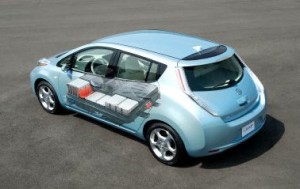 Nissan Leaf will go over 200: The
Nissan Leaf will go over 200: The 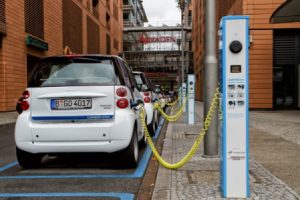 Volkswagen Group just made a commitment to change its business strategy in the wake of the diesel emissions scandal that started last September. The German automaker will be introducing more than “30 new pure electric vehicles” by 2025, while also establishing a mobility solutions division. Two other German automakers are heading down a similar path. Daimler will be introducing a long-range electric vehicle this fall at the Paris auto show, but it’s just the tip of the iceberg for its electrification strategy, according to Mercedes-Benz USA’s chief executive. BMW will be adding to the i Series with the “i Next” as the automaker combines autonomous mobility with electrification in the BMW and Mini brands.
Volkswagen Group just made a commitment to change its business strategy in the wake of the diesel emissions scandal that started last September. The German automaker will be introducing more than “30 new pure electric vehicles” by 2025, while also establishing a mobility solutions division. Two other German automakers are heading down a similar path. Daimler will be introducing a long-range electric vehicle this fall at the Paris auto show, but it’s just the tip of the iceberg for its electrification strategy, according to Mercedes-Benz USA’s chief executive. BMW will be adding to the i Series with the “i Next” as the automaker combines autonomous mobility with electrification in the BMW and Mini brands.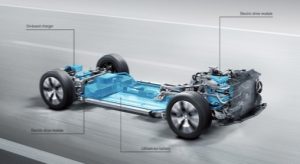 Daimler green powertrain plan: Daimler will be
Daimler green powertrain plan: Daimler will be 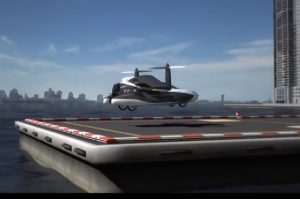 If you’re a fan of science fiction author Philip K. Dick, and movies made from his writings, you’ve probably been thinking about flying cars for years. Featured in the Do Androids Dream of Electric Sheep? novel and Blade Runner film – and “The Electric Ant” and “Minority Report” short stories (along with the Steven Spielberg film Minority Report) – flying cars will be one of the mobility options we use daily, according to the author.
If you’re a fan of science fiction author Philip K. Dick, and movies made from his writings, you’ve probably been thinking about flying cars for years. Featured in the Do Androids Dream of Electric Sheep? novel and Blade Runner film – and “The Electric Ant” and “Minority Report” short stories (along with the Steven Spielberg film Minority Report) – flying cars will be one of the mobility options we use daily, according to the author.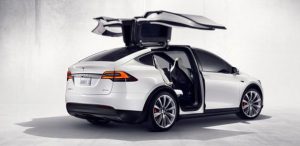 May EV and hybrid sales: The Tesla Model X has seen a huge sales increase – up a third from the previous month. Consumer Reports did feature a critical review in print and video, focused mainly on concerns with the falcon doors and too many bells and whistles versus practical features. That was released last week, so we’ll have to check on June sales to see if it’s having an impact. The Model S is seeing some decline in sales month-over-month and year-over-year. The Ford Fusion Energi is doing well in sales, and is getting closer to the Fusion Hybrid in overall sales numbers. The Ford C-Max Energi continues to soften in sales. Overall battery electric and plug-in hybrid electric vehicle sales were flat from April, and were up 5.5% over May 2015. Hybrid sales as a share of total U.S. new vehicle sales increased slightly – up to 2% of the total share after it had been hovering below the 2% mark for several months. Since it was debuted in January 2015, the Toyota RAV4 Hybrid has become a hot seller. Now at No. 2 in the rankings, it came in at No. 9 during the month of December 2015 with 1,430 units sold that month. The hybrid version was debuted a few months after Toyota halted production of the low-selling all-electric RAV4.
May EV and hybrid sales: The Tesla Model X has seen a huge sales increase – up a third from the previous month. Consumer Reports did feature a critical review in print and video, focused mainly on concerns with the falcon doors and too many bells and whistles versus practical features. That was released last week, so we’ll have to check on June sales to see if it’s having an impact. The Model S is seeing some decline in sales month-over-month and year-over-year. The Ford Fusion Energi is doing well in sales, and is getting closer to the Fusion Hybrid in overall sales numbers. The Ford C-Max Energi continues to soften in sales. Overall battery electric and plug-in hybrid electric vehicle sales were flat from April, and were up 5.5% over May 2015. Hybrid sales as a share of total U.S. new vehicle sales increased slightly – up to 2% of the total share after it had been hovering below the 2% mark for several months. Since it was debuted in January 2015, the Toyota RAV4 Hybrid has become a hot seller. Now at No. 2 in the rankings, it came in at No. 9 during the month of December 2015 with 1,430 units sold that month. The hybrid version was debuted a few months after Toyota halted production of the low-selling all-electric RAV4.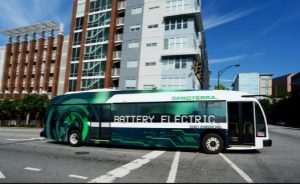 US-China electric bus competition: On Friday in Los Angeles, U.S. Secretary of Transportation Anthony Foxx and Chinese Minister of Transport Yang Chuantang signed an agreement officially announcing the US-China “Race to Zero Emissions.” One city from each of the two countries will be competing to determine which one will deploy the highest percentage of emission free buses by 2025. The race is designed to improve air quality in urban areas and prevent climate change. For each of the cities entering the competition, the minimum size of the fleet must be 200 or more buses. Two smaller transit properties can form a team and compete in the race if their combined fleet size is 200 buses or more. Potential participants can learn more at
US-China electric bus competition: On Friday in Los Angeles, U.S. Secretary of Transportation Anthony Foxx and Chinese Minister of Transport Yang Chuantang signed an agreement officially announcing the US-China “Race to Zero Emissions.” One city from each of the two countries will be competing to determine which one will deploy the highest percentage of emission free buses by 2025. The race is designed to improve air quality in urban areas and prevent climate change. For each of the cities entering the competition, the minimum size of the fleet must be 200 or more buses. Two smaller transit properties can form a team and compete in the race if their combined fleet size is 200 buses or more. Potential participants can learn more at